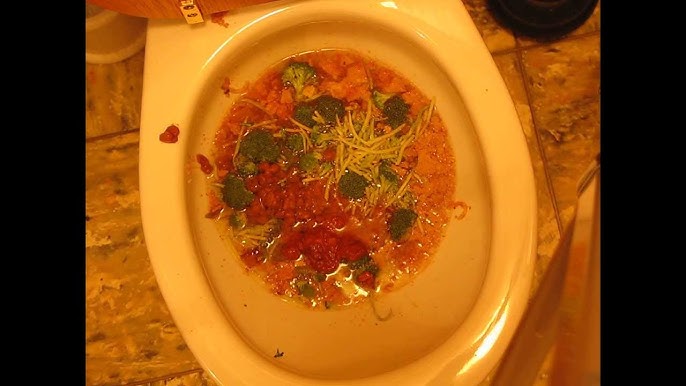Are You Permitted to Flush Food Down the Toilet?
Are You Permitted to Flush Food Down the Toilet?
Blog Article
We have stumbled on the article involving Flushing Food Down the Toilet? below on the internet and concluded it made perfect sense to write about it with you on my blog.

Introduction
Lots of people are often confronted with the dilemma of what to do with food waste, especially when it involves leftovers or scraps. One usual concern that occurs is whether it's okay to purge food down the toilet. In this post, we'll delve into the reasons people may consider flushing food, the effects of doing so, and different methods for appropriate disposal.
Reasons why individuals might think about flushing food
Lack of understanding
Some people might not understand the prospective damage caused by purging food down the commode. They might wrongly believe that it's a safe practice.
Comfort
Purging food down the commode might seem like a quick and easy service to taking care of undesirable scraps, particularly when there's no close-by garbage can available.
Idleness
In many cases, people might just pick to flush food out of sheer idleness, without taking into consideration the repercussions of their actions.
Effects of flushing food down the toilet
Ecological impact
Food waste that winds up in waterways can add to air pollution and damage aquatic communities. Furthermore, the water made use of to flush food can strain water sources.
Plumbing concerns
Flushing food can lead to stopped up pipes and drains pipes, causing costly pipes repair services and aggravations.
Kinds of food that need to not be purged
Coarse foods
Foods with coarse appearances such as celery or corn husks can obtain entangled in pipelines and create blockages.
Starchy foods
Starchy foods like pasta and rice can soak up water and swell, causing clogs in pipelines.
Oils and fats
Greasy foods like bacon or food preparation oils ought to never ever be purged down the toilet as they can solidify and cause obstructions.
Correct disposal techniques for food waste
Utilizing a waste disposal unit
For homes outfitted with waste disposal unit, food scraps can be ground up and flushed with the plumbing system. Nonetheless, not all foods are suitable for disposal in this way.
Recycling
Specific food packaging materials can be recycled, decreasing waste and lessening environmental effect.
Composting
Composting is a green means to get rid of food waste. Organic materials can be composted and utilized to enrich dirt for gardening.
The significance of proper waste management
Lowering environmental damage
Proper waste monitoring techniques, such as composting and recycling, assistance minimize contamination and maintain natural deposits for future generations.
Securing pipes systems
By preventing the technique of flushing food down the commode, property owners can avoid expensive plumbing repair services and preserve the stability of their plumbing systems.
Conclusion
Finally, while it may be tempting to purge food down the commode for ease, it is very important to recognize the prospective repercussions of this activity. By adopting correct waste monitoring methods and getting rid of food waste sensibly, individuals can add to healthier plumbing systems and a cleaner atmosphere for all.
THINK TWICE BEFORE FLUSHING FOOD DOWN YOUR TOILET IN FALLBROOK CA
Let’s be honest, we’re really supposed to be tossing rotten or leftover food in the compost bin or trash can. But many people like to place scraps of food down the drain of, say, their kitchen sink. That’s why the garbage disposal was invented: so we can continue to place certain foods down the drain without clogging our drain in the process. Smart.
But not all of us have the luxury of having a garbage disposal installed. So, you might continue to shove food down your sink drain anyway – or worse: you might flush them down your toilet! If you’re guilty of doing the latter, you’re going to want to stop, and here’s why:
Toilet Drains Aren’t Designed to Handle Food!
There’s your answer: food just doesn’t belong in your toilet. It may seem like your toilet drain is wider than the drains of your sinks, but truth be told, that isn’t actually the case. The narrower pipes of your toilet leave your plumbing at risk for clogging if you do happen to flush your food. In addition, food doesn’t break down as quickly that toilet paper and human waste do. In turn, this leaves your toilet at risk for a nasty clog.
Although a flush of a tiny pinch of food every now and then isn’t going to completely damage your toilet, there are certain foods that should absolutely not be flushed in your toilet at all. These include starchy foods like mashed potatoes, grains, hard pieces of food that are slow to break down, and fats and oils.
The latter categories of food are particularly problematic as they may harden, expand as they absorb water, break down slowly in your system, or generally create the perfect obstruction with their gelatinous composition. These are all things you don’t want in your plumbing system!
Experiencing a Toilet Clog?
Nobody’s perfect, and we all make mistakes. Sometimes one of the mistakes people make is flushing food down their toilet and later realizing that it wasn’t the best thing to do once they see that their toilet is now clogged. Uh-oh!

We were introduced to that report about through a friend on our other website. Are you aware of someone else who is curious about the subject? Be sure share it. Many thanks for going through it.
Schedule Now! Report this page